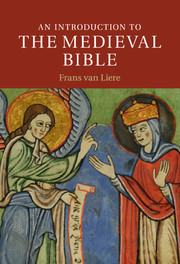Book contents
- Frontmatter
- Dedication
- Contents
- Preface
- Chapter 1 Introduction
- Chapter 2 The Bible as Book
- Chapter 3 The Medieval Canon
- Chapter 4 The Text of the Medieval Bible
- Chapter 5 Medieval Hermeneutics
- Chapter 6 The Commentary Tradition
- Chapter 7 The Vernacular Bible
- Chapter 8 The Bible in Worship and Preaching
- Chapter 9 The Bible of the Poor?
- Afterword
- Appendix A A Comparative Canon Chart
- Appendix B Names for Biblical Books
- Appendix C A Schematic Genealogy of Old Testament Translations
- Bibliography
- Index of Manuscripts Cited
- Index of Biblical References
- Subject and Author Index
- References
Bibliography
Published online by Cambridge University Press: 05 June 2014
- Frontmatter
- Dedication
- Contents
- Preface
- Chapter 1 Introduction
- Chapter 2 The Bible as Book
- Chapter 3 The Medieval Canon
- Chapter 4 The Text of the Medieval Bible
- Chapter 5 Medieval Hermeneutics
- Chapter 6 The Commentary Tradition
- Chapter 7 The Vernacular Bible
- Chapter 8 The Bible in Worship and Preaching
- Chapter 9 The Bible of the Poor?
- Afterword
- Appendix A A Comparative Canon Chart
- Appendix B Names for Biblical Books
- Appendix C A Schematic Genealogy of Old Testament Translations
- Bibliography
- Index of Manuscripts Cited
- Index of Biblical References
- Subject and Author Index
- References
- Type
- Chapter
- Information
- An Introduction to the Medieval Bible , pp. 273 - 302Publisher: Cambridge University PressPrint publication year: 2014



